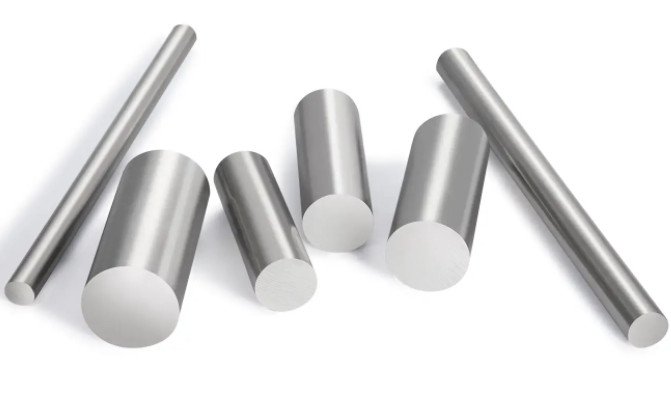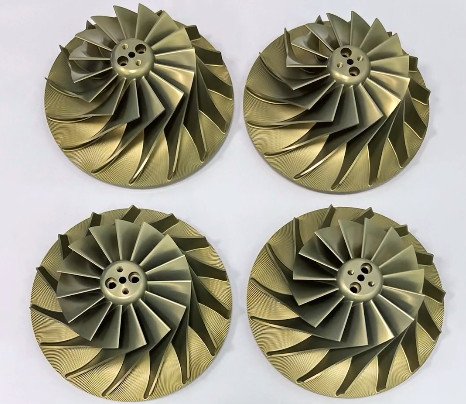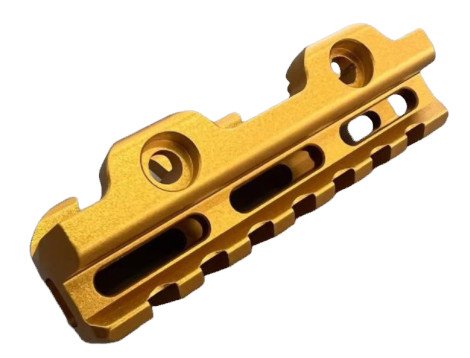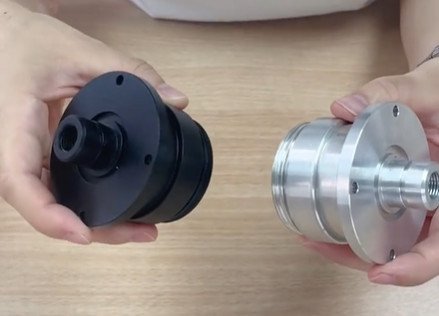Aluminium alloys are materials formed by combining aluminium with elements such as copper, magnesium, zinc, silicon, and manganese. These alloys are tailored to achieve specific mechanical, physical, and chemical properties, making them suitable for diverse applications in industries like aerospace, automotive, construction, and marine engineering. This article provides a detailed, technical overview of aluminium alloy types, classified by their primary alloying elements, processing methods, and heat treatment capabilities.
Classification by Primary Alloying Element
Aluminium alloys are primarily categorized based on the main alloying element, which significantly influences their mechanical properties, corrosion resistance, and suitability for specific applications. Below is a detailed breakdown of the major types.
Aluminium-Copper Alloys (Al-Cu)
Aluminium-copper alloys, often referred to as the 2000 series, are known for their high strength and good heat resistance. These alloys are typically strengthened through heat treatment processes like solution treatment and aging. However, their corrosion resistance is relatively poor, often requiring protective coatings or surface treatments.
Key Properties:
- Tensile Strength: 400–500 MPa (e.g., 2024 alloy)
- Density: ~2.78 g/cm³
- Corrosion Resistance: Moderate, requires coatings in corrosive environments
- Heat Treatability: Excellent, via precipitation hardening
Typical Grades:
- 2024: Contains ~4.5% copper, 1.5% magnesium, and 0.6% manganese. Offers high strength and toughness. Commonly used in aircraft structures like fuselage and wings.
- 2014: Contains ~4.4% copper, 0.8% silicon, and 0.8% manganese. Exhibits superior heat resistance, suitable for engine components and high-temperature applications.
Applications: Aerospace (aircraft frames, structural components), high-strength machinery parts.
Aluminium-Magnesium Alloys (Al-Mg)
Aluminium-magnesium alloys, known as the 5000 series, are valued for their excellent corrosion resistance, particularly in marine environments. These alloys have good formability and weldability but moderate strength, which can be enhanced through cold working rather than heat treatment.
Key Properties:
- Tensile Strength: 200–350 MPa (e.g., 5052 alloy)
- Density: ~2.68 g/cm³
- Corrosion Resistance: Excellent, especially in seawater
- Heat Treatability: Not heat-treatable, strengthened by cold working
Typical Grades:
- 5052: Contains ~2.5% magnesium. Offers balanced strength and formability. Used in automotive body panels, pressure vessels, and pipelines.
- 5083: Contains ~4.5% magnesium and 0.7% manganese. Provides higher strength and superior corrosion resistance, ideal for shipbuilding and marine structures.
Applications: Marine vessels, automotive components, chemical storage tanks, architectural panels.
Aluminium-Zinc Alloys (Al-Zn)
Aluminium-zinc alloys, part of the 7000 series, are the strongest aluminium alloys at room temperature, offering tensile strengths comparable to some steels. They are heat-treatable but have lower corrosion resistance, often requiring surface treatments like anodizing or plating.
Key Properties:
- Tensile Strength: 500–700 MPa (e.g., 7075 alloy)
- Density: ~2.81 g/cm³
- Corrosion Resistance: Poor, requires protective coatings
- Heat Treatability: Excellent, via precipitation hardening
Typical Grades:
- 7075: Contains ~5.6% zinc, 2.5% magnesium, and 1.6% copper. Known for its ultra-high strength, used in aircraft landing gear and high-performance sporting equipment.
- 7050: Improved stress corrosion resistance over 7075, with ~6.1% zinc and 2.2% magnesium. Suitable for large aerospace structural components.
Applications: Aerospace (aircraft frames, landing gear), high-strength components, precision machinery.
Aluminium-Silicon Alloys (Al-Si)
Aluminium-silicon alloys are widely used for casting due to their excellent fluidity, low shrinkage, and good weldability. These alloys, often part of the 4000 series for wrought alloys or specific casting grades, are suitable for complex shapes and moderate-strength applications.
Key Properties:
- Tensile Strength: 150–300 MPa (e.g., 356 alloy)
- Density: ~2.68 g/cm³
- Corrosion Resistance: Good
- Heat Treatability: Some grades are heat-treatable
Typical Grades:
- 356: Contains ~7% silicon and 0.3% magnesium. Used for casting automotive wheels and engine blocks due to its good castability.
- 4043: Contains ~5% silicon. Primarily used as a welding filler material due to its excellent weldability.
Applications: Automotive castings (wheels, engine components), welding wires, agricultural machinery.
Aluminium-Manganese Alloys (Al-Mn)
Aluminium-manganese alloys, part of the 3000 series, offer good corrosion resistance and high formability but lower strength. These alloys are not heat-treatable and rely on cold working for strengthening.
Key Properties:
- Tensile Strength: 100–200 MPa (e.g., 3003 alloy)
- Density: ~2.73 g/cm³
- Corrosion Resistance: Very good
- Heat Treatability: Not heat-treatable
Typical Grades:
- 3003: Contains ~1.2% manganese. Widely used for beverage cans, kitchen utensils, and pipelines due to its formability and corrosion resistance.
- 3004: Contains ~1.0% manganese and 1.0% magnesium. Slightly stronger than 3003, used for beverage can lids and decorative panels.
Applications: Packaging (cans, containers), kitchenware, low-strength structural components.
Aluminium-Magnesium-Silicon Alloys (Al-Mg-Si)
Aluminium-magnesium-silicon alloys, known as the 6000 series, are versatile due to their balanced strength, corrosion resistance, and excellent formability, particularly for extrusion processes. These alloys are heat-treatable, making them suitable for a wide range of applications.
Key Properties:
- Tensile Strength: 200–400 MPa (e.g., 6061 alloy)
- Density: ~2.70 g/cm³
- Corrosion Resistance: Good
- Heat Treatability: Excellent, via precipitation hardening
Typical Grades:
- 6061: Contains ~1.0% magnesium and 0.6% silicon. Offers a good balance of strength and formability, used in structural profiles, automotive parts, and bicycle frames.
- 6063: Contains lower magnesium and silicon content. Highly formable, ideal for architectural extrusions like window and door frames.
Applications: Construction profiles, transportation components, machinery parts.
Classification by Processing Method
Aluminium alloys are also classified based on their processing methods, which determine their suitability for specific manufacturing techniques and applications.
Wrought Aluminium Alloys
Wrought aluminium alloys are processed through mechanical methods like rolling, extrusion, or forging. These alloys are highly formable and can be shaped into plates, sheets, tubes, or complex profiles.
Key Characteristics:
- High formability and ductility
- Suitable for rolling, extrusion, and forging
- Examples: 2000, 5000, 6000, and 7000 series
Applications: Structural components, aerospace parts, automotive panels, architectural extrusions.
Cast Aluminium Alloys
Cast aluminium alloys are designed for casting processes like sand casting or die casting. These alloys have excellent fluidity and low shrinkage, making them ideal for complex shapes.
Key Characteristics:
- Excellent castability and fluidity
- Low shrinkage during solidification
- Examples: 356, 208.0 (Al-Cu casting alloy)
Applications: Automotive engine blocks, wheels, complex machinery parts.
Classification by Heat Treatment
Aluminium alloys are further categorized based on their ability to be strengthened through heat treatment, which affects their mechanical properties and applications.
Heat-Treatable Aluminium Alloys
These alloys can be strengthened through heat treatment processes like solution treatment and aging, which enhance their mechanical properties. Common series include 2000, 6000, and 7000.
Key Characteristics:
- Strengthened via precipitation hardening
- High strength-to-weight ratio
- Examples: 2024, 6061, 7075
Applications: Aerospace, automotive, high-strength structural components.
Non-Heat-Treatable Aluminium Alloys
These alloys rely on cold working (e.g., rolling, stretching) to increase strength, as they cannot be strengthened through heat treatment. Common series include 3000 and 5000.
Key Characteristics:
- Strengthened via cold working
- Good corrosion resistance and formability
- Examples: 3003, 5052
Applications: Packaging, marine structures, low-strength components.
Comparison of Aluminium Alloy Types
The following table summarizes the key properties and applications of the major aluminium alloy types for quick reference.
| Alloy Series | Main Alloying Element | Tensile Strength (MPa) | Corrosion Resistance | Heat Treatability | Typical Applications |
|---|---|---|---|---|---|
| 2000 (Al-Cu) | Copper | 400–500 | Moderate | Yes | Aerospace, machinery |
| 3000 (Al-Mn) | Manganese | 100–200 | Very Good | No | Packaging, kitchenware |
| 5000 (Al-Mg) | Magnesium | 200–350 | Excellent | No | Marine, automotive |
| 6000 (Al-Mg-Si) | Magnesium, Silicon | 200–400 | Good | Yes | Construction, transportation |
| 7000 (Al-Zn) | Zinc | 500–700 | Poor | Yes | Aerospace, high-strength parts |
Selection Considerations
Choosing the appropriate aluminium alloy depends on several factors, including required strength, corrosion resistance, processing method, and cost. For instance:
- Aerospace: Prioritize high-strength 7000 series alloys like 7075 for critical components, despite their need for corrosion protection.
- Construction: Opt for 6000 series alloys like 6063 for extrusions due to their formability and corrosion resistance.
- Marine Applications: Select 5000 series alloys like 5083 for their superior resistance to seawater corrosion.
- Cost-Sensitive Applications: Use 3000 series alloys like 3003 for low-strength, corrosion-resistant components like beverage cans.
By understanding the properties and applications of each alloy type, engineers and designers can make informed decisions to meet specific performance and environmental requirements.



